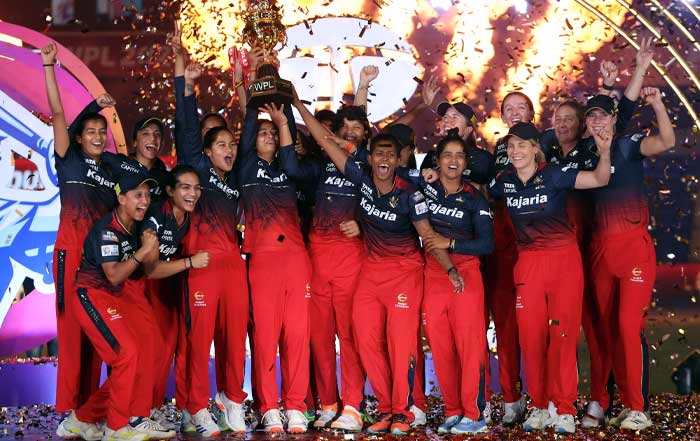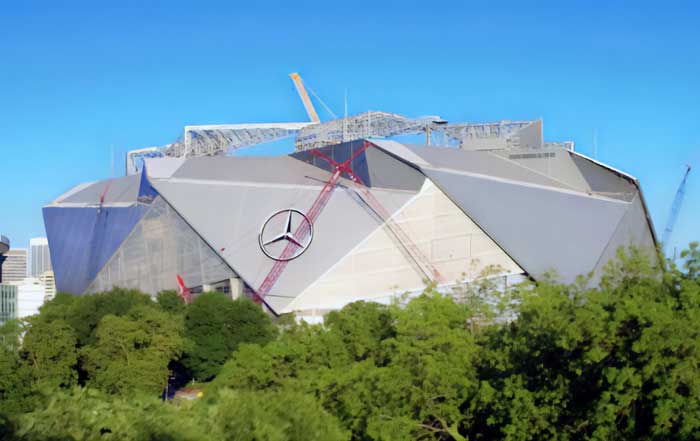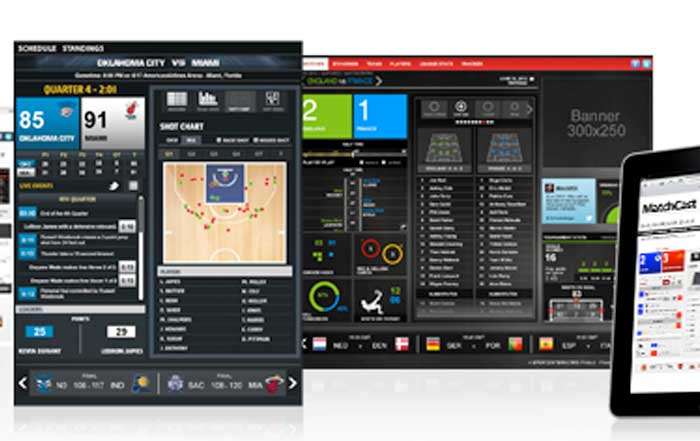Cricket, a sport deeply ingrained in the cultural fabric of India, has evolved remarkably over the years, transitioning from a traditional pastime into a dynamic spectacle that captivates millions globally. This transformation is not confined to India alone but resonates across nations where cricket holds sway, reflecting a broader trend of innovation and modernization within the sport. The changes encompass technological advancements, novel formats, enhanced training methodologies, and revolutionary fan engagement strategies. These innovations are not only reshaping how cricket is played and viewed but are also influencing its administration and commercial aspects, heralding a new era that blends tradition with modernity.
One of the most significant technological innovations that have redefined cricket is the implementation of the Decision Review System (DRS). Introduced to minimize human error and enhance the accuracy of umpiring decisions, DRS employs a suite of technologies including Hawk-Eye ball tracking, Ultra Edge (formerly known as Snickometer), and Hot Spot thermal imaging. Hawk-Eye predicts the trajectory of the ball to determine LBW (Leg Before Wicket) decisions, Ultra Edge detects the faintest of edges using sound waves, and Hot Spot uses infrared imaging to identify contact between the bat and ball. The integration of these technologies has not only increased the fairness of the game but has also added a strategic dimension, as teams must decide judiciously when to challenge an umpire's call using their limited reviews. The presence of DRS has influenced player behavior on the field, with batsmen and bowlers becoming more cautious in their appeals and acknowledgments, knowing that technology can verify or overturn decisions.
Parallel to DRS, the advent of data analytics has revolutionized cricket by providing teams with granular insights into performance metrics. Advanced statistical models analyze vast amounts of data related to player performance, pitch conditions, weather patterns, and opposition tactics. Teams now employ data analysts and performance scientists who dissect this information to inform selection decisions, devise game strategies, and optimize player workloads. For instance, predictive analytics can suggest the most effective bowling changes against specific batsmen based on historical data, while cluster analysis can identify patterns in a player's scoring areas to set precise field placements. This analytical approach moves the game towards a more evidence-based strategy formulation, reducing reliance on gut feeling and anecdotal experience. The impact of data analytics is evident in the success of teams that have embraced this innovation, often gaining a competitive edge over those that rely solely on traditional methods.
Technological advancements have also permeated player fitness and performance through the use of wearable technology. Devices such as GPS trackers, accelerometers, and heart rate monitors are now integral to training regimes and match-day preparations. These wearables collect real-time data on a player's physiological and biomechanical parameters, including metrics like distance covered, sprint speeds, heart rate variability, and workload intensity. Coaches and sports scientists analyze this data to tailor individualized training programs, manage recovery protocols, and prevent injuries by identifying signs of overexertion or biomechanical inefficiencies. The emphasis on sports science and personalized conditioning has resulted in players being fitter, more agile, and capable of sustaining high performance levels over prolonged periods. This shift has elevated the overall standard of play, with matches featuring higher intensity and athleticism than in previous eras.
The broadcasting and consumption of cricket have been transformed by innovations in media technology, significantly enhancing the viewing experience for fans worldwide. High-definition cameras, ultra-motion replays, and drone-based aerial shots provide unprecedented visual clarity and unique perspectives of the action on the field. Technologies like Spidercam allow for dynamic overhead shots, bringing viewers closer to the game than ever before. The integration of virtual graphics, such as pitch maps and wagon wheels, offers insightful visual representations of data, helping fans understand the nuances of the game. Augmented reality (AR) and virtual reality (VR) are emerging as the next frontier in cricket broadcasting, enabling immersive experiences where fans can feel as though they are part of the stadium atmosphere from the comfort of their homes. These advancements not only make cricket more accessible and entertaining but also help in broadening its appeal to tech-savvy younger audiences.
Beyond technology, the introduction and evolution of new formats have been instrumental in changing the landscape of cricket. The advent of Twenty20 (T20) cricket has been a game-changer, compressing the traditional format into a fast-paced, three-hour spectacle that emphasizes aggressive batting, innovative bowling, and dynamic fielding. The Indian Premier League (IPL), launched in 2008, epitomizes the success of this format by blending high-quality cricket with elements of entertainment, such as music, dance performances, and celebrity involvement. The IPL has become one of the most lucrative and widely followed cricket leagues globally, attracting top talent from around the world and generating significant revenue through broadcasting rights, sponsorships, and merchandising. This commercial success has prompted other countries to establish their own T20 leagues, such as Australia's Big Bash League, the Caribbean Premier League, and the Pakistan Super League, further globalizing the sport.
Experimentation with even shorter formats is pushing the boundaries of traditional cricket. The Hundred, introduced in England, features 100-ball innings with unique rules designed to simplify the game and make it more accessible to new audiences. Similarly, T10 leagues in the United Arab Emirates and other regions condense matches into a swift 90-minute affair. These formats aim to capture the attention of spectators who prefer shorter, more intense sporting events, aligning cricket with contemporary entertainment consumption trends. The impact on player skills and strategies is significant, requiring cricketers to adapt quickly, innovate continuously, and perform under heightened pressure, thus elevating the game's overall competitiveness.
At the grassroots level, innovations in talent development and training methodologies are shaping the future of cricket by nurturing the next generation of players. State-of-the-art cricket academies equipped with advanced facilities provide aspiring cricketers access to professional coaching, fitness training, and psychological support from an early age. Techniques such as video analysis allow coaches to dissect a player's technique frame by frame, identifying areas for improvement with precision. Biomechanical assessments help in optimizing bowling actions to enhance performance and reduce injury risk. Virtual simulations recreate match scenarios, enabling players to practice decision-making and skill execution in a controlled environment. These academies also focus on holistic development, instilling values of discipline, teamwork, and sportsmanship, ensuring that young players are well-prepared to meet the physical and mental demands of modern cricket.
Digital platforms and social media have emerged as powerful tools for talent scouting and engagement. Initiatives like the IPL's talent hunts and cricket reality shows provide platforms for players from remote or underrepresented regions to showcase their abilities. Apps and online portals allow cricketers to upload videos and performance statistics, breaking down geographical barriers and democratizing opportunities. This accessibility has expanded the talent pool, introducing diversity into the sport by bringing in players with varied backgrounds, playing styles, and cultural influences. The stories of cricketers rising from humble beginnings to international stardom inspire aspiring athletes and contribute to the sport's narrative richness.
Advancements in women's cricket represent another significant innovation impacting the sport in India and beyond. Historically overshadowed by the men's game, women's cricket has gained substantial momentum through increased investment, media coverage, and support from cricketing authorities. The Board of Control for Cricket in India (BCCI) has taken proactive steps to promote women's cricket by organizing domestic tournaments, improving infrastructure, and providing professional contracts. The Indian women's cricket team's success on the international stage, including reaching the finals of the ICC Women's World Cup and the ICC Women's T20 World Cup, has galvanized public interest and inspired a new generation of female cricketers. Tournaments like the Women's T20 Challenge and the proposed Women's IPL are set to provide platforms for talent exposure, financial incentives, and professional growth, bringing gender parity closer in the cricketing realm.
Cricket Innovations Timeline
Globally, the advancements in women's cricket are fostering international collaborations and competitiveness. Bilateral series and multi-nation tournaments are becoming more frequent, raising the standards of play and providing players with invaluable experience. The increased visibility of women's cricket challenges traditional gender norms and promotes inclusivity, encouraging more girls and women to participate in the sport at all levels. This shift not only enriches cricket with diverse talent but also contributes to broader societal change by empowering women and promoting equality.
Innovations in fan engagement have transformed how cricket connects with its audience, leveraging technology and creativity to enhance the spectator experience. Social media platforms like Tiktok, Instagram, and Facebook allow teams and players to interact directly with fans, sharing behind-the-scenes content, personal insights, and live updates. This direct engagement fosters a sense of community and loyalty, as fans feel more connected to their favorite players and teams. Interactive campaigns, contests, and fan-generated content initiatives encourage active participation, making spectators an integral part of the cricketing narrative.
The rise of e-sports and cricket-themed video games offers another avenue for fan engagement, particularly among younger demographics. Realistic cricket simulations like the "Cricket 19" game or mobile apps like "World Cricket Championship" allow fans to experience the sport virtually, often incorporating real player statistics and live updates. Virtual tournaments and online competitions provide platforms for fans to test their skills and compete with others globally. These gaming experiences not only serve as entertainment but also help in educating fans about the intricacies of the sport, potentially increasing their appreciation and understanding of cricket.
Infrastructure developments have played a pivotal role in modernizing cricket, enhancing both player performance and spectator enjoyment. The construction of modern stadiums with advanced facilities, such as retractable roofs, cutting-edge drainage systems, and high-quality floodlights, ensures that matches can proceed with minimal interruptions due to weather conditions. Innovations in pitch preparation, utilizing hybrid grass technologies and soil science, allow curators to create surfaces that offer a balance between bat and ball, leading to more competitive and engaging matches. Additionally, there is a growing emphasis on sustainability within cricket infrastructure. Stadiums like the M. Chinnaswamy Stadium in Bangalore and the Maharashtra Cricket Association Stadium in Pune have adopted eco-friendly practices, including solar power generation, rainwater harvesting, and waste management systems, setting benchmarks for environmental responsibility in sports.
Regulatory and administrative changes have facilitated the implementation of these innovations, with cricket's governing bodies adopting progressive policies to promote transparency, accountability, and ethical practices. The BCCI and the International Cricket Council (ICC) have introduced measures to combat corruption and match-fixing, employing technology to monitor communications and financial transactions. The use of anti-corruption units and education programs aims to safeguard the integrity of the sport by raising awareness among players, officials, and stakeholders. Governance reforms, such as the adoption of standardized codes of conduct and disciplinary procedures, ensure that cricket adapts to global standards and addresses emerging challenges effectively.
The commercialization of cricket has also been transformed through innovations in marketing and revenue generation. Sponsorships, merchandising, and broadcasting rights have become significant income streams, with brands leveraging cricket's popularity to reach vast audiences. The IPL's model of franchise ownership, featuring corporate entities and celebrities, has introduced new dimensions to cricket's business landscape. Innovative marketing campaigns and brand partnerships enhance the sport's visibility and financial viability, enabling further investment in development programs, infrastructure, and player welfare.
Furthermore, the globalization of cricket is being propelled by efforts to expand the sport into non-traditional markets. The ICC's initiatives to promote cricket in countries like the United States, China, and various European nations involve development programs, exhibition matches, and inclusion in multi-sport events like the Asian Games. T20 leagues featuring international players help in popularizing the sport and building fan bases in these regions. The potential inclusion of cricket in future Olympic Games is a testament to the sport's growing global footprint and its adaptability to diverse cultural contexts.
In the realm of education and social development, cricket is being utilized as a tool for community engagement and empowerment. Programs like Cricket for Change and the ICC's Cricket 4 Good initiative use the sport to address social issues, promote health and education, and foster social cohesion. By integrating cricket into school curricula and community projects, these programs leverage the sport's popularity to deliver positive societal impacts, particularly among youth populations.
The intersection of cricket and technology continues to evolve, with emerging fields like artificial intelligence (AI) and machine learning offering new possibilities. AI-powered analytics can provide deeper insights into player performance, injury prediction, and tactical decision-making. Virtual coaching platforms and AI-driven training aids offer personalized feedback and skill development opportunities, democratizing access to high-quality coaching resources. The use of blockchain technology in ticketing and merchandising aims to enhance security and transparency, combating fraud and ensuring a better experience for fans.
As cricket moves further into the digital age, issues related to data privacy, cyber security, and ethical considerations arise. Governing bodies and organizations must navigate these challenges carefully, balancing innovation with responsibility. Regulations governing data use, player rights, and fair competition need to evolve alongside technological advancements to ensure the sport's integrity and sustainability.
In finale, the multitude of innovations transforming cricket in India and beyond reflects the sport's remarkable ability to adapt and thrive amidst rapid societal and technological changes. From technological enhancements like DRS and data analytics to new formats like T20 and The Hundred, cricket is continuously reinventing itself to meet the evolving preferences of players and audiences alike. The emphasis on player development, inclusivity, and sustainability positions cricket as a progressive sport that honors its rich traditions while embracing the future. These innovations not only enhance the quality and appeal of the game but also contribute to its global growth, cultural significance, and positive societal impact. As cricket continues to innovate, it promises to deliver exciting developments that will captivate fans, inspire players, and uphold the sport's enduring legacy for generations to come.








